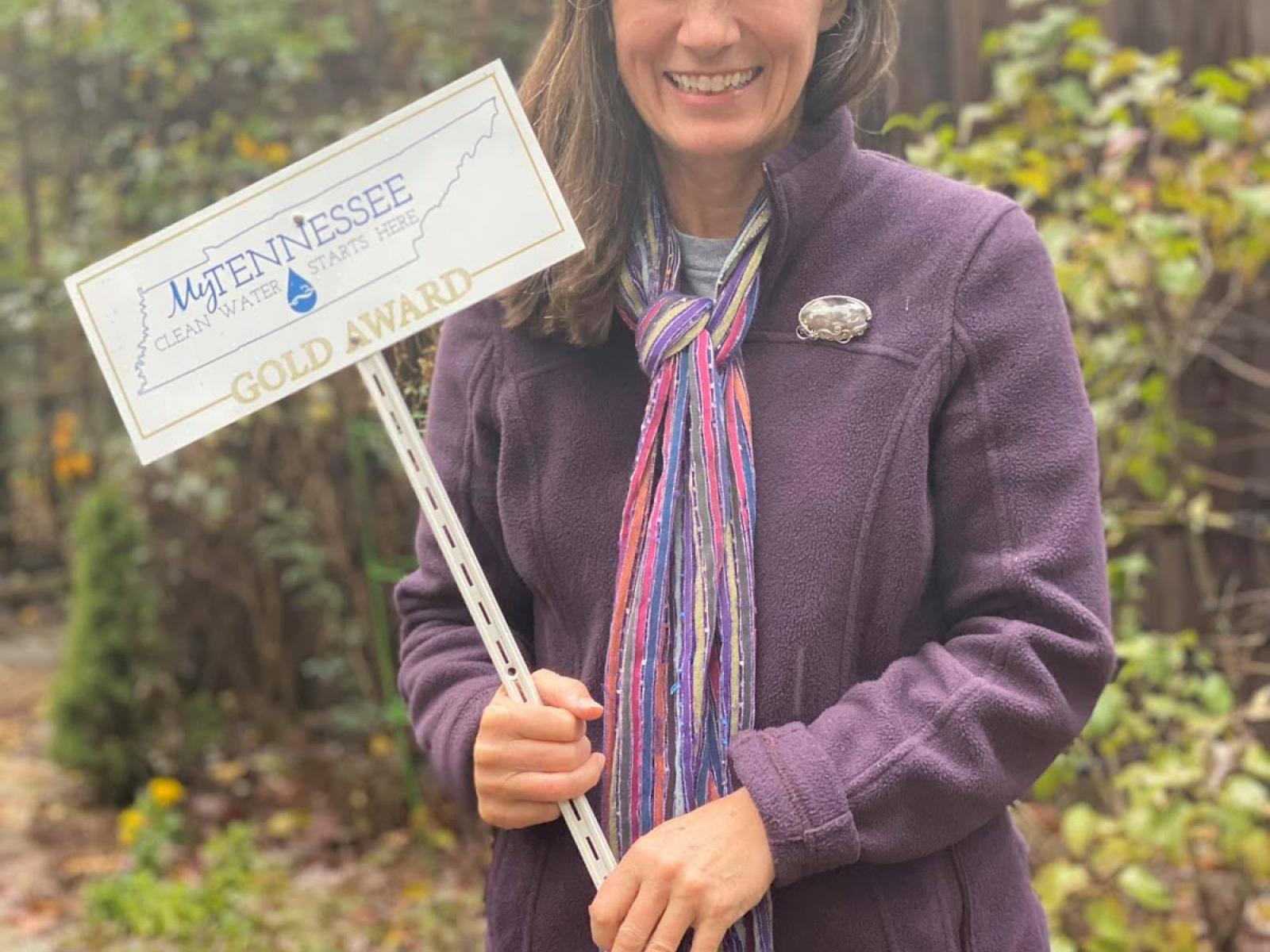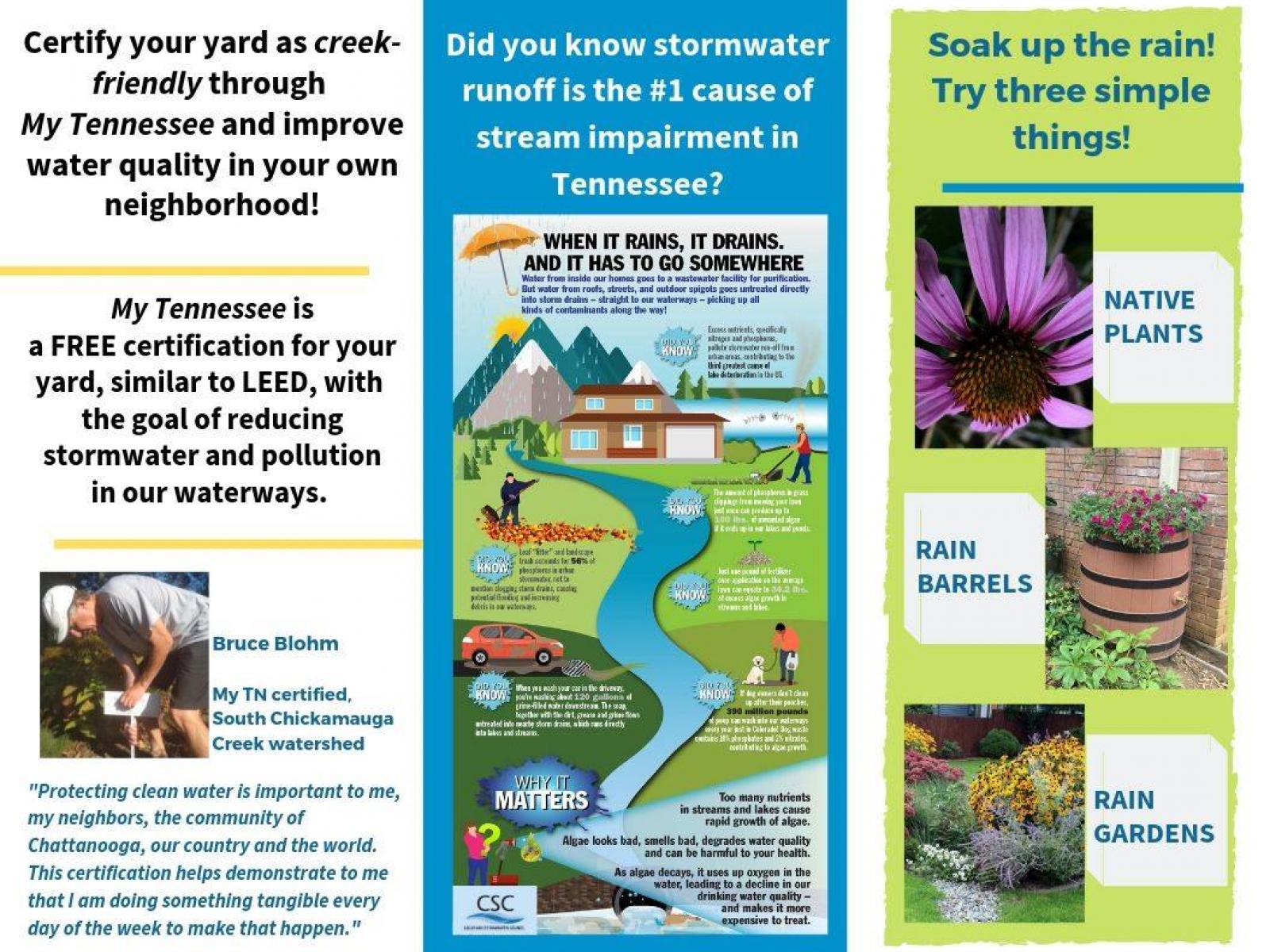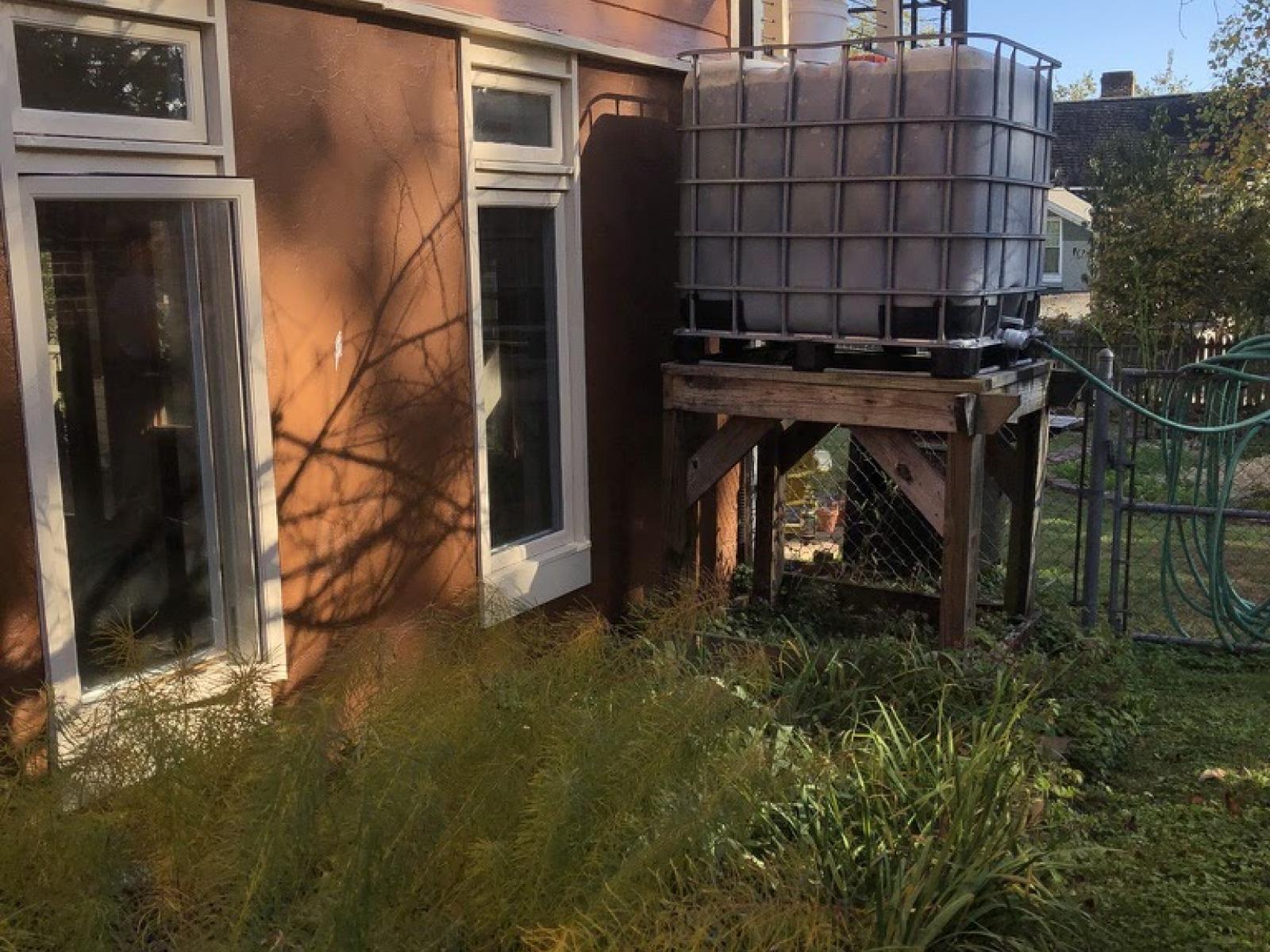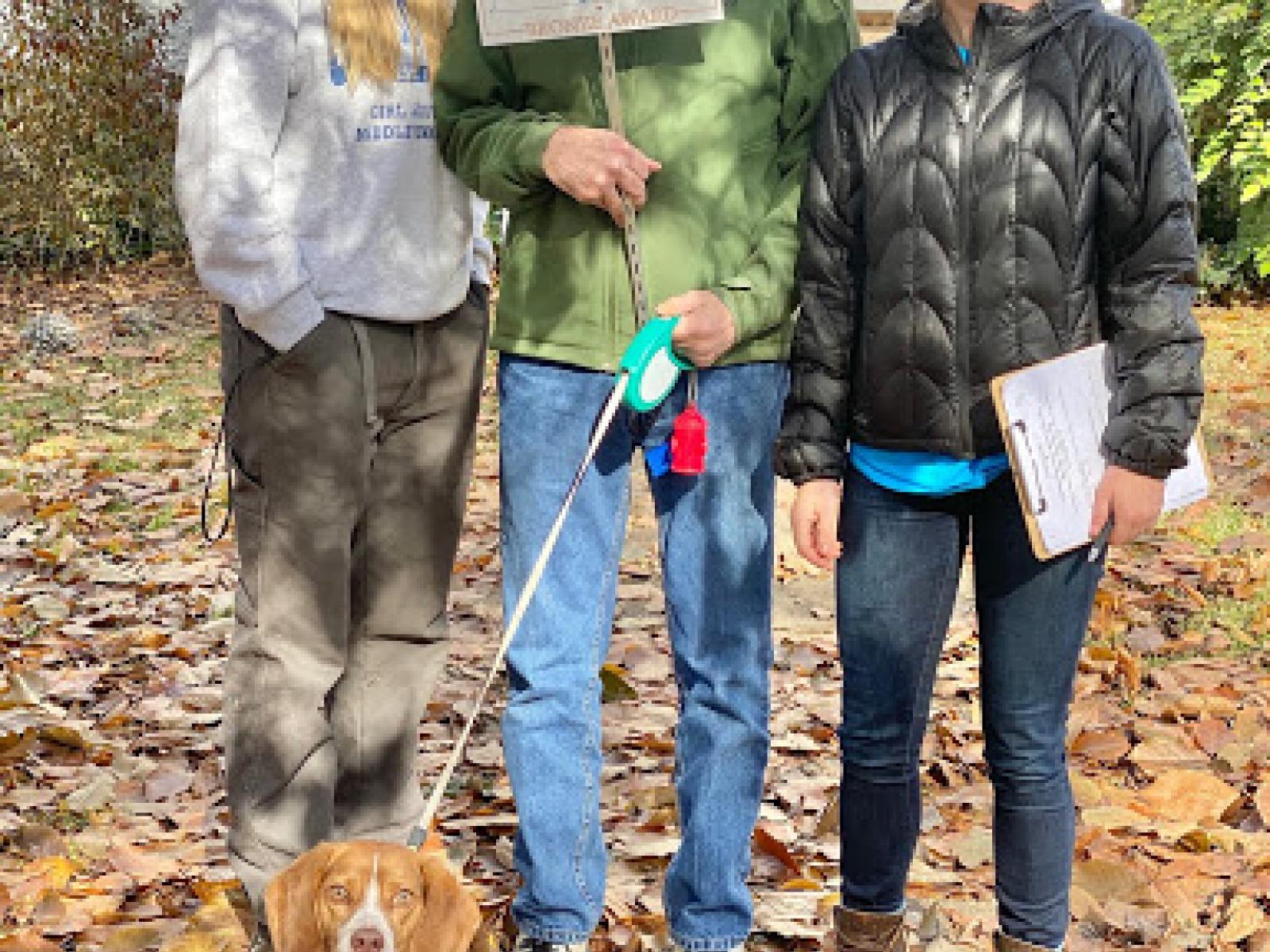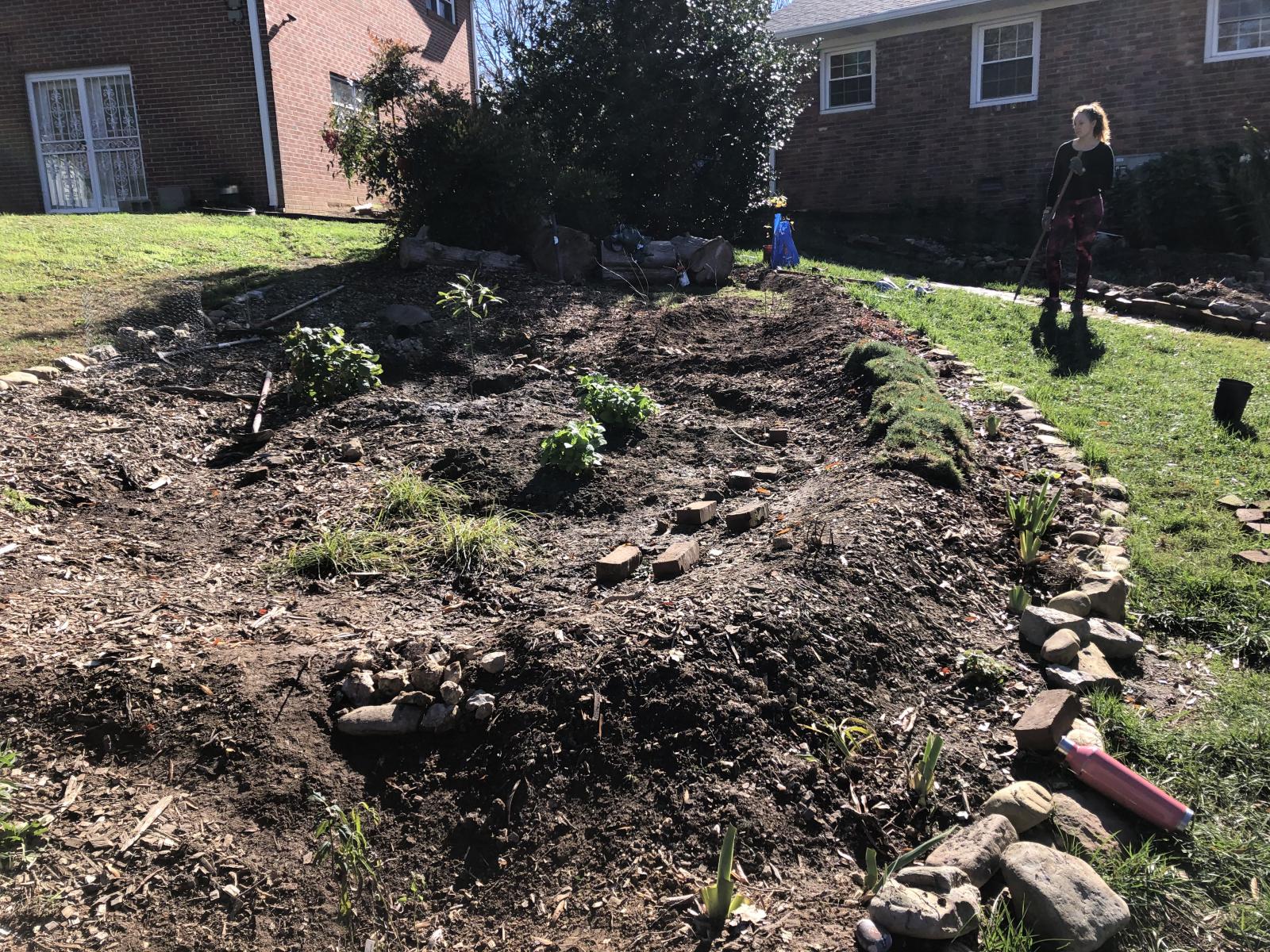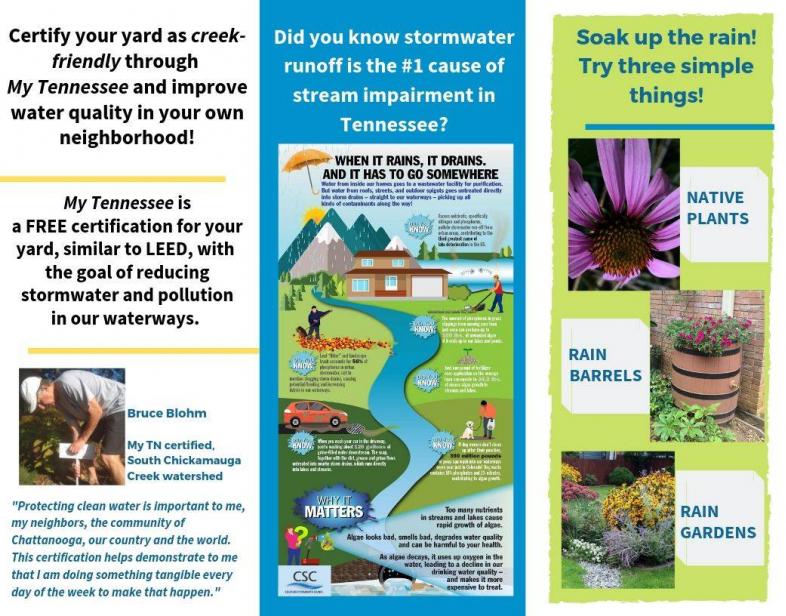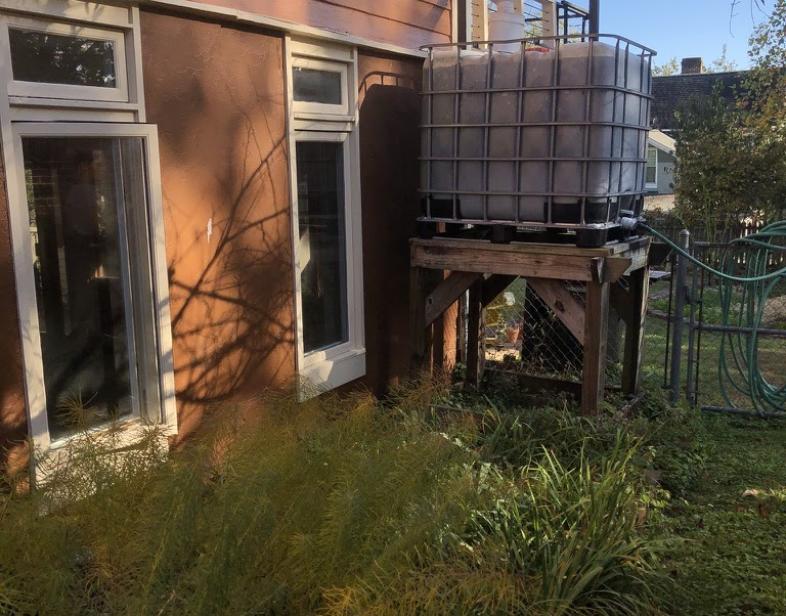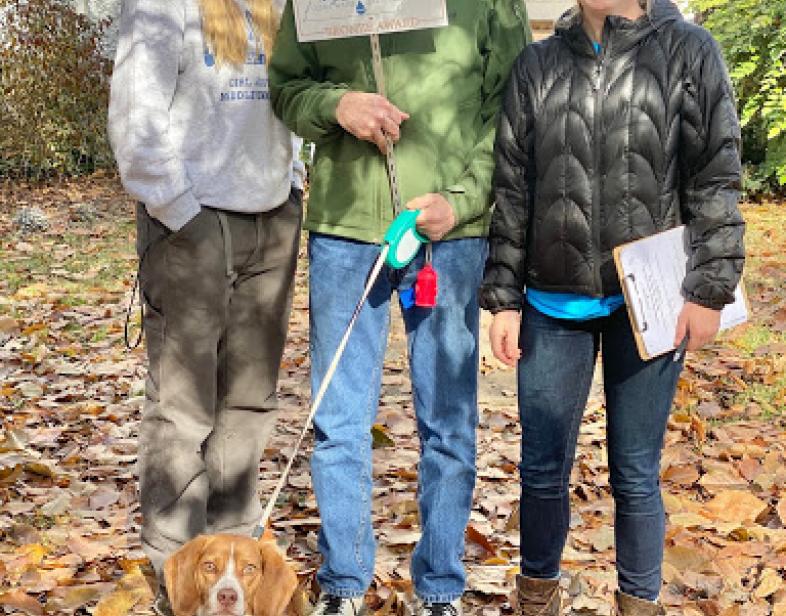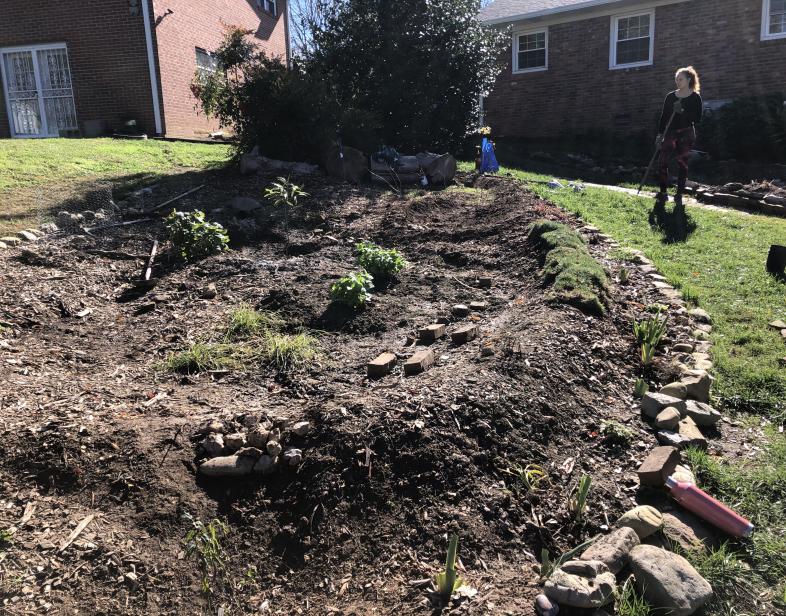An Overview Of Our Solution
My Tennessee: Clean Water Starts Here awards home and business owners for conscientious, creek-friendly practices at their properties. Begun in partnership with the City of Chattanooga and Hamilton County, this program recognizes and showcases homeowners and business owners around the Chattanooga area who implement sustainable and responsible environmental practices on their properties and in their homes, benefitting our waterways. The addition of green infrastructure features like rain gardens, rain barrels, and natural buffers can keep polluted water out of waterways, reduce the chances of flooding for those downstream, sustain the groundwater, and provide habitat for native species. Providing incentives for reducing water pollution from homes will help protect and improve our waterways for the future.
- Population Impacted: 336,463
- Continent: North America
First name
Last name
Organization type
Context Analysis
Chattanooga is the most urbanized city in Hamilton County. Though it holds about half of the county’s population, it holds only a quarter of its land mass. Additionally, about 5.8% of the city’s area consists of streams and wetlands, which is considerably higher than the 2.2% water area of the entire state of Tennessee. Furthermore, the city’s average annual total precipitation is about 52 inches, 67% of which falls over the course of just 5 months. Considering these statistics, it is important to note that the city of Chattanooga also has a combined sewer system, merging both sewer and stormwater together in the same pipeline. The unique geography of Chattanooga, paired with an outdated infrastructure and the urbanization of wetland and floodplain areas, puts the health of our community and our streams at risk. This is an issue that must be tackled by our entire community, and why WaterWays has implemented a community stewardship program, My Tennessee: Clean Water Starts Here.
Describe the technical solution you wanted the target audience to adopt
My Tennessee (abbreviated My TN) is a community education, evaluation and award program, examining the landscaping and building practices of private homeowners and businesses . We encourage efforts to protect our waterways by reducing stormwater runoff - the primary vector of water pollution - through the implementation of green infrastructure and creek-friendly landscaping. By distributing educational materials and conducting property evaluations, we allow members of all communities to participate in this solution to water pollution. We offer an award to participants who can adapt their homes to reflect creek-friendly practices: installing rain gardens, pollinator gardens, rain barrels; reducing or removing impervious surfaces; removing invasive species; halting use of chemical herbicides and pesticides; etc. With growing urbanization and Chattanooga’s reliance on water, it is important to enable communities to act as stewards by offering urban solutions to an expanding problem.
Describe your behavioral intervention.
There are several motivations for participating in My Tennessee: Clean Water Starts Here. One incentive is a participation award, a sign which can be placed in front of the participating home or business, and social media recognition. The awarded signs elicit positive responses and interest from participants’ neighbors, which helps expand our outreach by increasing the community's curiosity about their impact in their watershed. We also incentivize potential participants by offering native plants and some project labor for free, making it easier for community members to participate in creek-friendly landscaping. Additionally, we have an incentive currently before the Chattanooga City Council to reimburse residents for up to 50% of their stormwater fee, in return for receiving a My Tennessee award for their properties and will be a strong incentive for participation. Although the purpose of the My Tennessee program is to reduce pollution of our waterways, the installation of green infrastructure associated with creek-friendly landscaping can also be used as a means to increase the value of one’s property by up to 5%. This significantly encourages participation by homeowners. Some early adopters have also been encouraged by the pollinator benefits. Combined, these several incentives motivate members of the community to change their approaches to land maintenance, which helps to decrease stormwater runoff and all of the detrimental pollutants it carries into our waterways.
Behavioral Levers Utilized
As needed, please explain how you utilized the lever(s) in more detail.
Through our certification process homeowners gain information such as the basics of stormwater, flood prevention and green infrastructure options. Our certification process also gives participants material incentives including an award sign for their lawn, a collection of public resources on green infrastructure and upkeep, and a chance to win a gift card to a native plant nursery. The City of Chattanooga is also voting to implement a stormwater fee reduction incentive which will reduce fees for qualifying homeowners in our award program. Therefore, those that seek this award and fee reduction will adhere to the regulations of the program and agree to be evaluated every two years. As for social influences, homeowners join a collaborative effort to improve local stormwater function and create a healthier environment for our community members. We ask our award recipients to nominate friends and neighbors to try to inspire and educate others on the possibilities our program offers.
Describe your implementation
Our program guides property owners through the process of implementing “creek-friendly” practices on their property, awarding them for their efforts. Proper stormwater management benefits the entire community by limiting the amount of polluted runoff that enters our waterways. Staff members visit each property that is nominated to conduct evaluations. Our certification criteria includes green infrastructure such as rain gardens, directing downspouts off impervious surfaces, presence of native plants, limited fertilizer and pesticide use, and removal of impervious surfaces. For those who do not meet our criteria, further advice and resources are given based upon the specific needs of their property. Once awarded, a sign is placed on the property that identifies the space as “creek-friendly,” spreading the word through the neighborhood! This program is possible because of our partnerships with local governments and other private organizations. Their support has allowed us to continuously expand our outreach. There have been many challenges, including property variability such as proximity to waterways, slope, infrastructure, soils, and size which required different criteria. By researching the needs of nominees, we established an outline of general traits to evaluate toward tiered awards. Another challenge comes seasonally, limiting our ability to identify native plants and invasives in winter, so only visiting homes in the growing season. Gaining access to private homes is also challenging, but we rely on community ties to build trusting relationships to allow us to evaluate properties and suggest improvements. In addition,homeowners perceived that if their property was not adjacent to a waterway, they didn’t impact it. Through better communication and education, we are slowly changing that perception! Lastly, providing an economic incentive for our awardees proved important and our close and lasting partnership with
Describe the leadership for your solution. Who is leading the implementation?
My Tennessee: Clean Water Starts Here was founded through a collaboration between our Executive Director and the Hamilton County and City of Chattanooga Water Quality Departments. It was set into motion by our former Watershed Coordinator, who had recently completed graduate school in water resources management. It continues to be implemented by our entirely female team of scientists, but is coordinated by our Outreach Coordinator (under 25) assisted by a team of interns, who are currently enrolled in Environmental Science and Outdoor Education programs at our local university. We continuously consult community leaders from across a wide spectrum of interests, both in the public and private sector, to guide our practices and to stay informed about the best procedures to implement green infrastructure in our community. This includes our Young Professional Board (ages 18-40), which has an active role in program design, consultation, and marketing.
Share some of the key partners or stakeholders engaged in your solution development and implementation.
One of our community partners, The Raines Group, a commercial real estate company, has become increasingly supportive of our initiatives and suggested that we create an award program for neighborhoods to get them to improve their practices. He suggested that it would also improve their home value as well, so should be an easy sell. After including the development of the program in a grant application, we had a discussion with the water quality department managers of our City and County. The City manager had just learned of a certification program in Vermont that might be a good model for us. After visiting the Vermont group and learning how they implement their program, we followed the advice of our real estate developer and developed an award program which also certifies homes as Creek Friendly. As we have refined the program, we have connected with the native plant society and Master Gardeners, who were eager to join with us in the effort. Most recently, we are in the planning phase of a statewide rollout with the assistance of Tennessee Stormwater Association, Agriculture Extension Agents, the University of Tennessee, and an engineering firm which specializes in green infrastructure. We plan to add other collaborators to be the implementers in other parts of the state.
Video file
Who adopted the desired behavior(s) and to what degree? Include an explanation of how you measured a change in behavior.
Beginning with our personal contacts and community connections, our program has been adopted and shared, bolstered by community talks and outreach. Through our contacts with Wild Ones (a native plant society) and the Master Gardeners of Hamilton County, we began to certify properties where many of our My TN tenets had been incorporated for a different objective-- creating a thriving habitat for pollinators by using native plants. The environmental interest preexisting in those groups provided a natural avenue for us to reach conscientious homeowners. As awareness of our program expanded, neighbors and friends of members began to get a firsthand look at just how beautiful, practical, and economical these sustainable practices can be. Follow-ups are conducted to document measurable change in the certified homes, with many homeowners adopting even better practices after our initial site visit. Adopters can also work to move up through our three levels of the award.
How did you impact water pollution? Please be specific and include measurement methodology where relevant.
When stormwater is contained on a property rather than escaping to drains or waterways, it seeps into the soil and eventually replenishes the groundwater supply with fresh, naturally purified water. The reduction in stormwater can also result in fewer combined sewer overflows, a reduction in septic drainage, and reduced erosion, all contributing to healthier aquatic ecosystems and improved water quality. If the average property we certify is .5 acres, over the course of a year 678,850 gallons of rain will fall on the property. If just 10 properties are certified, nearly 7 million gallons of water is kept out of our already taxed sewer and stormwater systems. To date, 30 homeowners in the Chattanooga area have been awarded a My TN certification, and more didn’t quite meet the qualifications yet but have been empowered to achieve them. These creek-friendly properties altogether account for the infiltration of more than 20,365,500 gallons of water over the course of a single year.
How has your solution impacted equity challenges (including race, gender, ethnicity, social class/income, or others)?
The outdated combined sewer and stormwater system here in Chattanooga is prone to discharging wastewater into residential, urban areas during heavy rain events, oftentimes literally into the streets. This discharge is composed of untreated human and industrial waste, toxic materials, and debris. Unfortunately, many of these outflows pose problems in low income communities of color, particularly in majority Hispanic enclaves. By encouraging green infrastructure in residential areas and incentivizing our My Tennessee: Clean Water Starts Here program, we are able to decrease the prevalence of flooding and septic overflow in urban areas, as well as filter pollutants that runoff may carry. This has a positive influence on public health in flood-impacted areas. Additionally, this program allows households that ordinarily can’t afford creek-friendly infrastructure to participate through our incentives of monetary reimbursement and free landscaping assistance.
What were some social and/or community co-benefits?
The installation of green infrastructure is necessary to reduce flooding that could otherwise lead to public health crises as a result of sewer overflow. Furthermore, eliminating the application of synthetic chemicals creates healthier residential areas, even if outside of the floodplain. Additionally, creek-friendly landscaping acts to beautify urban areas and increase the value of communal spaces and residential neighborhoods. Therefore, green infrastructure provides both form and function.
What were some environmental co-benefits?
Besides decreasing water pollution caused by stormwater runoff, one of the many key characteristics of a creek-friendly yard is a pollinator garden. The My Tennessee program guarantees a suitable habitat for pollinator species such as bees, wasps, and butterflies. In addition, the planting of native species and removal of invasive species acts to increase biodiversity in the region, improving soil quality and providing food and shelter for other native animals and insects.
What were some sustainable development co-benefits?
Green infrastructure is an essential aspect of every sustainable community. The installation of features such as rain gardens, pollinator gardens, and rain barrels is a sustainable, cost-effective solution to beautify communities while positively influencing the environment and public health. Green infrastructure is also sustainable because of the integration of native plants, which require less water, maintenance, and improve soil quality, as compared to invasives or non-native ornamentals.
Sustainability: Describe the economic sustainability of your solution.
After My Tennessee’s inception via local grant funding, the City recognized its benefit in encouraging non point source water pollution control through private homeowners which as regulators, they cannot achieve. They offered us a collaborative partnership to fund the program. We are confident in the sustainability of this partnership, which is reliant on our ability to meet a participant quota. Since the program’s inception in 2018, we have met and continue to exceed expectations, and additionally continue to expand this program’s reach throughout the county. The city had previously established a RainSmart program, which My Tennessee now assists them to meet, including their rain barrel and rain garden assistance programs.
Return on investment: How much did it cost to implement these activities? How do your results above compare to this investment?
If this program were to be conducted by the stormwater department, it would cost them an average of $9 per cubic foot. On a half acre lot, this equals an average cost of $196,020, excluding labor. The cost of the My TN program implemented by WaterWays for one year comes out to around $18,500. This includes staffing a program manager as well as assistants, marketing, and materials. Our investment is saving the city hundreds of thousands per year in management costs, and invaluable environmental benefit to communities: stormwater abatement, and the addition of native pollinator habitat. Homeowners will also see a return on their personal investment through the increase in property value and stormwater fee reduction.
How could we successfully replicate this solution elsewhere?
Variations of the My Tennessee program have been started in several areas of the US on a limited scale. We are continuing to expand our outreach, and are currently working to scale up from the local, county level to state level utilizing a consortium of university, private sector and community partners. Key stakeholders and partners that would easily fit into the narrative of expansion include: universities, water quality departments, forestry and agriculture departments, extension agents, community groups, homeowners associations, master gardeners, and native plant societies. The program could be initiated elsewhere using start-up funding to modify My Tennessee to suit local needs, develop the collaboration necessary to get it started, train the implementing agency or ngo, and develop marketing materials and fund staff for the first two years. Our start up grant was $84,000, but cost of implementation elsewhere would be dependent on who is implementing and the cost of living there.
